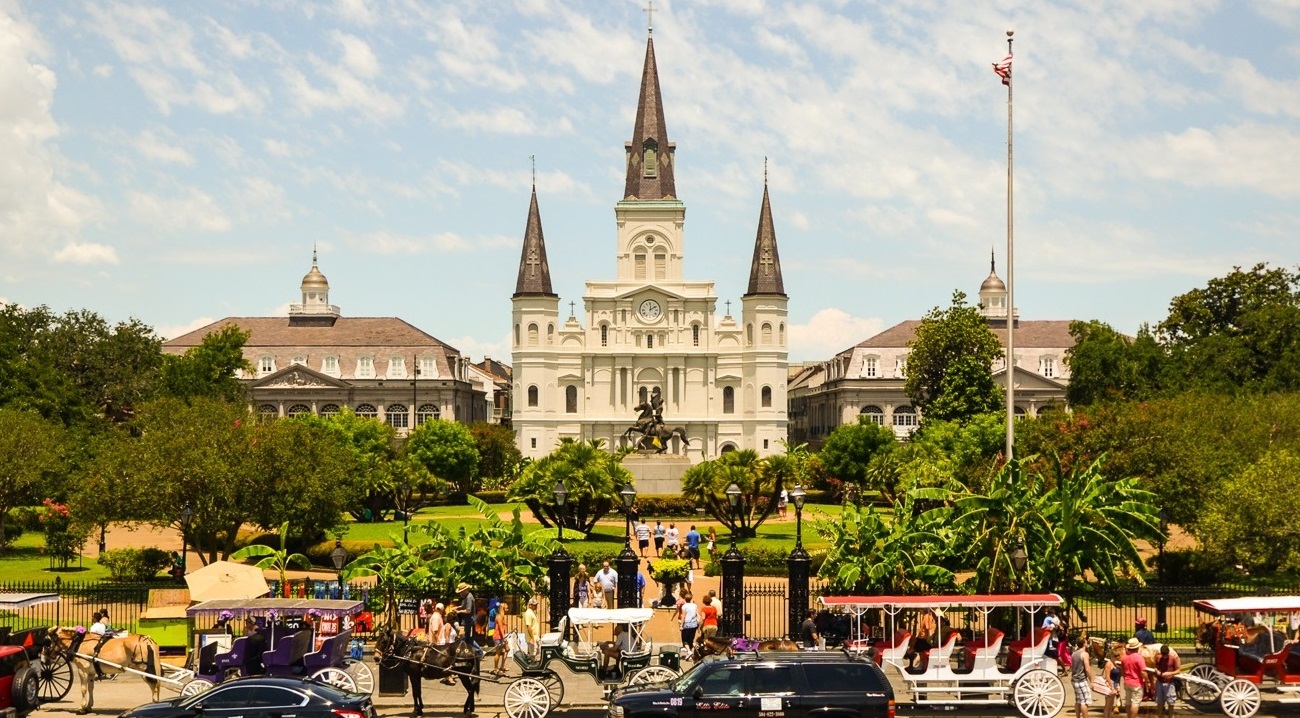Louisiana Unveiled: A Journey Through the Pelican State
Louisiana, often called the “Pelican State,” is a vibrant and diverse region in the southern United States, renowned for its unique blend of cultures, rich history, and stunning natural landscapes. From the bustling streets of New Orleans to the serene bayous and swamps, Louisiana offers a captivating mix of music, cuisine, festivals, and traditions that reflect its complex and multicultural heritage. This state is not just a place but an experience, where every corner has a story to tell and a flavor to savor.
Historical Background
The history of Louisiana is a tapestry influenced by African, Acadian, French, Spanish, and Native American cultures. The area was once home to several Native American tribes, such as the Choctaw and Natchez, but in 1682, explorer Robert Cavelier de La Salle claimed it for France. After being named after King Louis XIV, the state of Louisiana was first settled by France, then Spain, then France again, and finally the United States bought it in the Louisiana Purchase of 1803.
The state’s colonial past is evident in its architecture, legal system, and cultural practices. French and Spanish settlers brought with them their languages, religions, and customs, which blended with those of African slaves and Native Americans to create the unique Creole culture. The arrival of Acadian refugees from Canada, who became known as Cajuns, further enriched the cultural mosaic of Louisiana.
New Orleans: The Cultural Heart
The largest city in Louisiana, New Orleans, is frequently considered to be the cultural center of the state. The city, which was founded in 1718 by French settlers, is well-known for its renowned Bourbon Street, jazz clubs, and lively French Quarter. The city’s colonial past is reflected in the French Quarter’s architecture, which is distinguished by wrought-iron balconies and vibrant façade.
Jazz music is closely associated with New Orleans, the city that gave rise to this distinctively American form. This city produced legendary musicians like Louis Armstrong and Jelly Roll Morton, and its impact on jazz and blues is still felt today all over the world. Every year, the New Orleans Jazz & Heritage Festival honors the city’s rich musical history and draws artists and tourists from all over the world.
Mardi Gras and Festivals
The most well-known event in Louisiana is Mardi Gras, which is known for its joyous atmosphere. This pre-Lenten celebration, with origins in French Catholicism, includes street gatherings, masquerade balls, and parades. Mardi Gras is a creative and joyous display of costumes, vibrant beads, and intricate floats.
Other than Mardi Gras, Louisiana has a plethora of festivals that showcase its rich cultural legacy. Among the state’s vibrant and inclusive festivities are the New Orleans Jazz & Heritage Festival, French Quarter Festival, and Essence Festival, to name a few. These gatherings highlight the cuisine, music, and visual arts of Louisiana while giving up-and-coming and established artists a stage.
Culinary Delights
Louisiana’s cuisine is a testament to its cultural diversity, blending French, Spanish, African, and Native American influences. The state is famous for its Creole and Cajun dishes, which offer a rich and flavorful dining experience. Creole cuisine, often associated with New Orleans, includes dishes like gumbo, jambalaya, and étouffée, characterized by the use of tomatoes, peppers, onions, and a variety of spices.
Cajun cuisine, originating from the rural areas of Louisiana, emphasizes rustic and hearty flavors, with dishes such as boudin sausage, crawfish boils, and jambalaya. Both culinary traditions rely heavily on local ingredients like seafood, rice, and the “holy trinity” of Cajun cooking: onions, bell peppers, and celery.

Seafood plays a central role in Louisiana’s cuisine, with the state being one of the leading producers of seafood in the United States. Fresh shrimp, crabs, oysters, and crawfish are staples in many traditional dishes. The state’s culinary heritage is celebrated at various food festivals, such as the Louisiana Seafood Festival and the Crawfish Festival, where visitors can indulge in these local delicacies.
Natural Beauty and Outdoor Activities
Louisiana’s natural landscapes are as diverse as its cultural heritage. The state is home to extensive wetlands, swamps, and bayous, which provide a unique ecosystem for a variety of wildlife. The Atchafalaya Basin, the largest swamp in the United States, offers opportunities for boating, fishing, and bird-watching, attracting nature enthusiasts from far and wide.

The state’s numerous state parks, such as Fontainebleau State Park and Kisatchie National Forest, provide a haven for outdoor activities like hiking, camping, and picnicking. Louisiana’s coastline along the Gulf of Mexico offers beautiful beaches and recreational opportunities, including deep-sea fishing and water sports.
Challenges and Adaptability
Louisiana is a state rich in natural resources and culture, but it also faces many obstacles, most notably the threat of natural disasters. The state has suffered greatly from hurricanes, flooding, and coastal erosion; catastrophes like Hurricane Katrina in 2005 brought attention to the region’s susceptibility. In the midst of these difficulties, the state has demonstrated incredible resiliency by continuing to work toward community reconstruction, environmental restoration, and increased preparedness for disasters.
Economic issues also impact the state, especially in rural areas. The oil and gas, agricultural, and marine sectors have historically constituted the backbone of Louisiana’s economy; nevertheless, initiatives are underway to diversify and advance sustainable development. The tourism and cultural heritage sectors, which draw millions of tourists annually, are vital to this diversification.
Conclusion
Louisiana is a state of contradictions and intersections, where modernism and history coexist and various cultural traditions come together to form a thriving and dynamic community. Louisiana provides a diverse range of experiences that enthrall the senses and speak to the soul, from the bustling streets of New Orleans to the serene bayous. Its people’s tenacity and inventiveness are demonstrated by its music, festivals, food, and scenic splendor. Despite facing numerous obstacles, Louisiana persists as a ray of cultural diversity and breathtaking scenery, beckoning everyone to discover the allure of the Pelican State.
